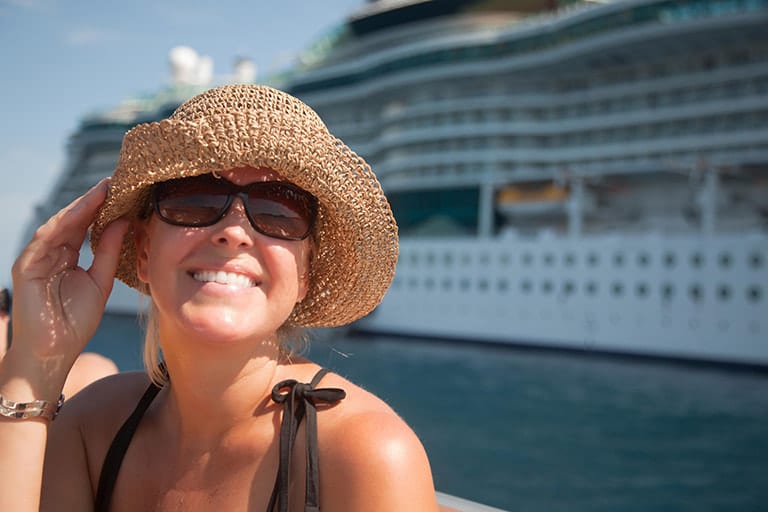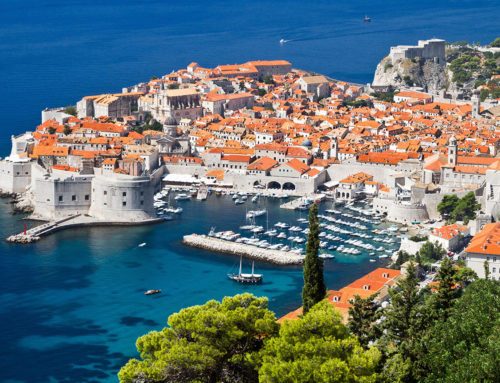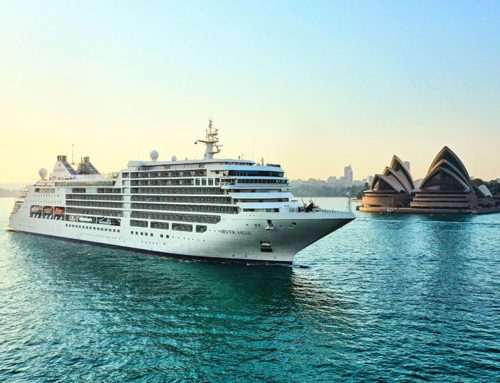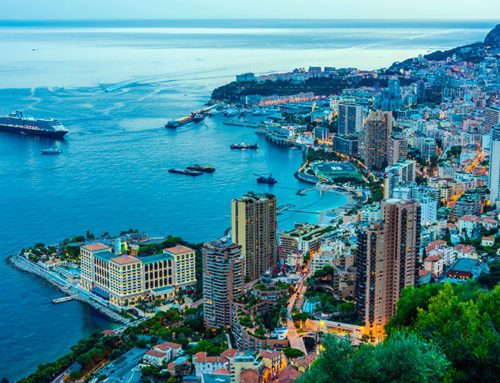I love cruising and have enjoyed it for over 25 years. I’ve walked through the awe inspiring ancient ruins of Pompeii. I’ve seen buildings and art I read about as a child in school. I’ve walked down paths that have been traveled for thousands of years. I’ve seen amazing landscapes, forests and gardens. I’ve come close to wild monkeys in a Buddhist temple and sloths slowly moving in Costa Rica. I’ve learned about the history and struggles of ancient civilizations. I’ve met friendly and helpful locals who helped me navigate streets in Venice, Zurich and Soul. And I’ve met incredible fellow cruise passengers each with a rich and interesting history.
I don’t want to lose these wonderful adventures cruise ships have given me. I have so much more I want to do and experience. So it is important that the cruise industry takes the right steps now to protect its passengers and the industry overall.
The Coronavirus is the big threat today, but another deadly virus will appear in the future. The cruise lines need to consider fundamental changes to deal with this and future pandemics.
So here are MY thoughts and recommendations on how to ensure the safety of passengers and the viability of the cruise industry:
2) Reduce Passenger Numbers – We know the denser a population the higher the infection rates tend to be. By reducing the number of passengers on each cruise ship by up to 25% we can significantly reduce the density on a cruise ship. Mass market or contemporary cruise ships have the highest density averaging around only 30 or so square feet per passenger. Luxury lines have up to twice the amount of square footage per guest, ranging from 49 – 60 square feet/guest. By design cruise ships have several high-density areas such as buffets, dining rooms, bars, theatres and shops. Reducing the number of passengers reduces the density and increases passenger safety.
Dining Rooms
Through their design, main dining rooms have a lower density than buffets, so encourage more guest to use the main dining rooms instead of the buffets.
3) Increase the number of main dining seatings from two to three to spread out the number of guests in the dining room and increase the distance between guests by removing some tables. This may require expanding the length of meal service to accommodate the increased need.
4) Open the main dining rooms for lunch during port days so guests can avoid the buffet.
5) Sanitize tables and chairs after each guest leaves. Just a quick spray as they clear plates and change table clothes. If it is likely that the disinfectant spray might hit a nearby guest, the tables are too close.
Buffets
Buffets are inherently a problem area. They have high density problems as people crowd around serving stations or wait in lines for omelets or to customize their salad. Also each person has to touch the serving utensils thereby passing a virus from person to person. Here is what can be done:
6) Expand the hours – The goal is to spread out the number of guests in the buffet area.
7) Eliminate self-service – Don’t allow guests to serve themselves or to get their own plates or utensils – staff should hand these to the guests. This will reduce the passing of viruses from person to person contact.
8) Limit number of guests in buffets at any time – We’ve all seen crowds of guests in a line or around a serving station.
9) Remove communal tables and tables too tightly packed.
10) Shows/Theatre – Theatres are designed to pack guest closely to each other. By increasing nightly shows from say two to three times an evening you can increase social distancing significantly.
11) Train staff – Teach them to be on the lookout for guests that appear sick and develop a plan to notify ship staff, evaluate the guest, and quarantine them if necessary. During the safety drill session advise guests that as a safety protection for all guests, staff is required to report any guest that appears sick so that they can receive proper medical care.
12) Identify and Reduce Crowding & Lines – Review all operations to identify when and where there are large congregations of guests and explore ways to reduce the density to safer levels.
13) Sanitizer dispensers – Place hand sanitizer dispensers all around the ship and encourage passengers to frequently use them as the walk through the ship.
14) Face Masks for Staff – The crew live in tight quarters shared with fellow members with up to 4 crew in one small cabin. In addition, many staff have regular and routine contacts with guests daily – servers, waiters, bartenders, and housekeeping. Design face masks with humorous or comforting artwork. It might take getting use to but it will make all of us safer.
15) Provide wipes or disinfectants for shore excursions – As much as you can try to control virus spread on the ship, each guest that leaves the ship for a shore excursion or walk around the city has the potential to bring it back onto the ship. Give guests wipes or sanitizers they can use while off the ship so they don’t bring anything back.
16) Increase ventilation – The more ships can increase airflow into public spaces and change over the air inside with fresh air from outside they will help minimize the potential for a virus to spread.
17) Wipe down touch points – Have staff continually walking the ship and wiping down with disinfectant all high touch points like railings, elevator buttons, tables and chairs, and counters.
18) Reduce the number of lounge chairs on the pool deck – Allow for more spacing between lounge chairs to reduce the density of guests around the pool.
19) Remove Tightly Packed Chairs – Reduce the number of chairs in cafes, libraries and other locations to increase spacing.
20) Educate guest – During the safety instructions, include a segment of how and why guest should always keep in mind ways to reduce their exposure and have a safe enjoyable cruise vacation.These steps will cost cruise lines money, but it will increase guest confidence and safety, and help ensure the long-term viability of the cruise industry. No one wants a repeat of the onboard quarantines we saw during this spring.
Let’s all stay safe so we can continue to enjoy all that cruising gives us for decades to come.
So how to choose the right vacation for you?
Vacations are an investment! With literally thousands of options, choosing the right vacation and the best value is difficult to sort through. That’s where I bring my 12 years of travel experience and expertise to do this right, and get you the best value for your money. With the backing of the largest travel consortium behind me, we have options you can’t find online. Plus our work just gets started once we book your dream vacation. Chat with us to learn more.
The world awaits you and we look forward to assisting you in choosing the exact right adventure on the waters or land for you and your companions!










